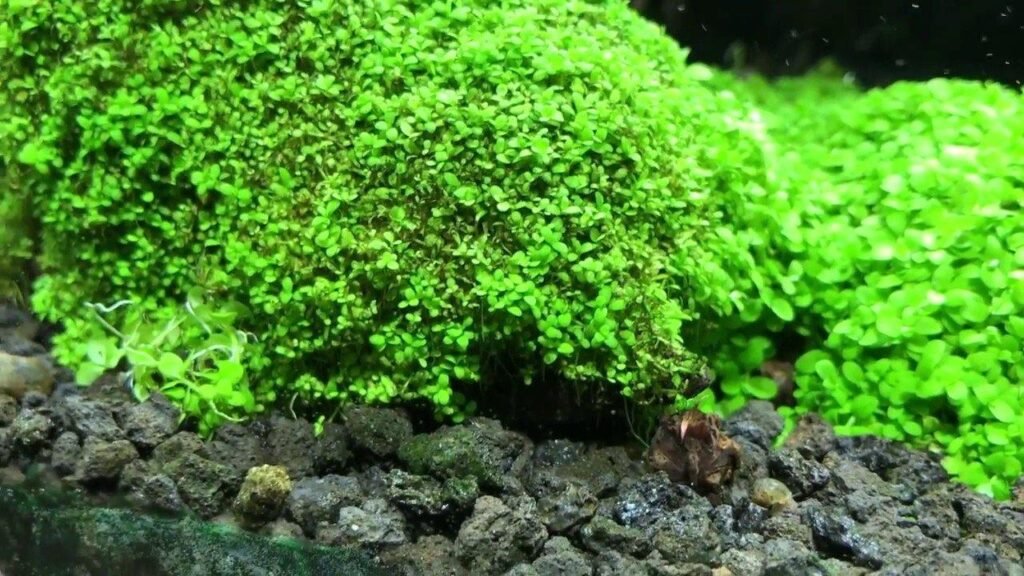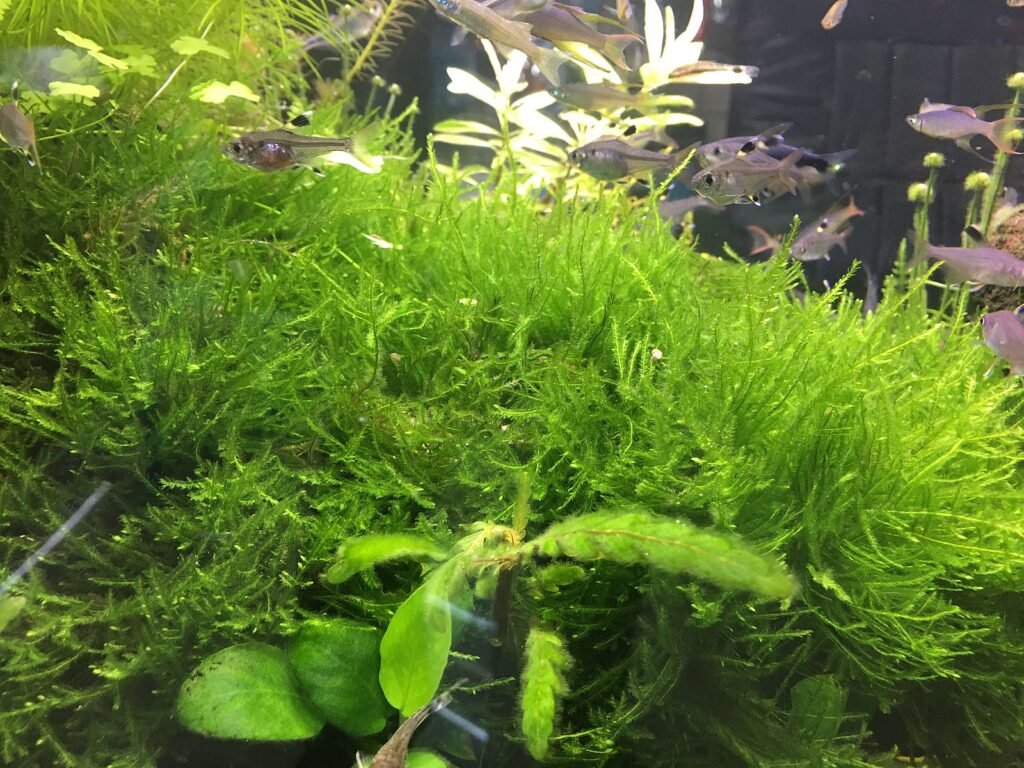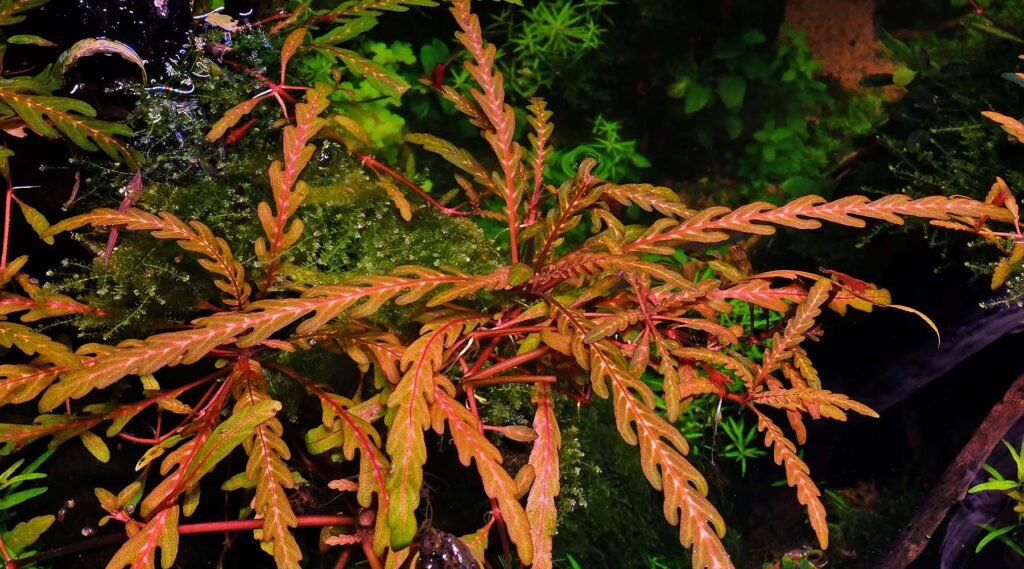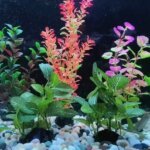Aquatic landscaping, akin to gardening for potted plants, is underwater garden art tailored for aquariums. In this guide, we look at the important basics of aquascaping plants, offering valuable insights to help enthusiasts nurture and cultivate a thriving aquatic environment.
Underwater landscaping demands a greater amount of time and expertise compared to traditional gardening, especially to attain the desired aesthetic.
In order to maintain a flourishing balanced aquarium you will need to know the fundamental aspects of water chemistry, plant nutrition, and the delicate interplay between plants and fish.
An Introduction to Aquascaping Plants
Aquascaping is almost just an afterthought for some aquarists, who are evolving from a simple aquarium with fish to an aquarium with greater landscape appeal, full of plants and rules.
When you learn aquascaping, your eyes move from the animals to the plants and other visuals in the aquarium. Aquascaping is a way to keep your fish in a beautiful, plant-filled community.
Comparison Table of Best Aquascaping Plants
| Image | Title | Price | Buy |
|---|---|---|---|
 | Marcus Fish Tanks - 3X Micranthemum Monte Carlo Pots Easy Live Aquarium Plants | View On AMAZON | |
 | Java Fern and Anubias Bundle | View On AMAZON | |
 | CANTON AQUATICS Live Aquarium Ludwigia Repens Plants - Great Background for Fish - Long Lasting & Easy to Maintain - Suitable for Summer & Winter - Natural Oxygenator - Bunch - Dark Red | View On AMAZON | |
 | Florida 10 Species Live Aquarium Plants Bundle | View On AMAZON | |
 | Marcus Fish Tanks - Anubias Barteri Pot Broad Leaf Anubias Easy Live Aquarium Plants Aquatic Plants Buy 2 GET 1 | View On AMAZON | |
 | Discus-Warm Water Aquarium Plant Bundle | View On AMAZON | |
 | 30+ Stems - 8 Species - - Anacharis, Amazon, Rotala, Ludwigia and More! | View On AMAZON | |
 | Swimming Creatures Java Moss (Large 25 Square Inch Portion) Freshwater Aquarium Plants Java Moss Live Plant for Aquarium. Guarantee. | View On AMAZON | |
 | Potted Cryptocoryne Aquarium Plants | Easy Aquatic Plants (Potted Cryptocoryne Red) | View On AMAZON | |
 | Mainam 3 Different Anubias Nana Java Fern Windelov Java Moss Tropical Freshwater Live Aquarium Plant Decorations 3 Days BUY2GET1FREE | View On AMAZON |
What is Aquascaping
Aquascaping is a technique that uses different materials — such as artificial or natural substrates, plants, rocks, driftwood, etc. — to develop underwater landscapes that recreate a harmonious, natural and healthy environment inside aquariums.
In addition to aquascaping, aquarists must also respect some techniques such as golden ration — a photographic “rule” that determines the points of most significant interest in a scene —, the depth effect and the aquarium’s naturalism.
Another exciting aspect about this art, is that aquariums do not necessarily need to have fish, as there are versions without fauna or containing only small ornamental animals.

Aquarium Plants That Will Make You a Better Aquascaper
This article will help you explain what vegetation will grow in low- and medium-tech ponds. While almost all plants benefit significantly from adding C02 to their tanks, however, we will focus on plants that can grow adequately without extra CO2 because setting up CO2 systems can be more complicated.
This blog is a guide to the correct techniques for designing a water garden with aquatic plants, rocks, and logs to blend in with nature.
Cool And Simple Aquascape Ideas For Aquascaping Tanks
Aquatic landscaping doesn’t just add plants to the aquarium. Aquatic landscape ponds usually hold few fish as the main focus of the aquarium is the design and the plants themselves.
Read on to discover the basics and find some ideas for making beautiful aquascapes. Discover how to grow your water garden in your aquarium using live plants. Read about basic aquascape design and find interesting new ideas at the next stage of the gardening revolution.
The Best Aquascaping Plants
In aquascaping, the plants are placed to grow and become even more beautiful with the contrasts between them. Everything is organized well-structured, and in some styles, only plants of different sizes and colors can be used to beautify the aquarium.
Anubias barteri
The thick leaves of Anubia maintain a deep green color, especially in low light. They are hardly ever attacked or damaged by snails or curious and greedy fish. As Anubia plants are grown from a rhizome, it does not use any underlying material.
Instead, these plants consume nutrients through their leaves; these nutrients can be stored in their rhizomes. Like other aquarium plants, these plants benefit from fertilizers, but they are one of the few plants that seem to survive only through water changes and fish waste.
They are usually embedded in rocks and logs or placed in caves that prevent other plants from spreading. Its rhizomes must not be buried in the substrate.

Cryptocoryne wendtii
Cryptocoryne plants tend to be a posthumous addition to many aquarists because these aquatic plants are less showy with natural shovel-shaped leaves. Unlike fastidious roots like Amazon swords, Cryptocoryne thrives in ponds without any added fertilizer.
They are available in various light green to reddish-brown leaf colors that add contrast to areas where dark green plants dominate.
Since they will quickly grow new buds to provide vitality to this tank area, when you shop online or at a Cryptocoryne pet store, you should keep in mind that these plants are susceptible to sudden changes in the environment.

Micranthemum ‘Monte Carlo’
Micranthemum is an aquarium plant with tiny leaves, which makes it an ideal foreground carpet plant. In water, Monte Carlo can grow slowly unless they have access to C02.
Many aquarists and aquascapers choose to start with a “dry start,” which requires placing the seedling in water before filling the tank with it.
The dry start tank is usually covered with a lid or plastic wrap that keeps moisture inside. The beginning of drying is left to grow as long as necessary to produce a mat and strong root structure, which takes more than a month, then the pond is filled with water.
It is possible to grow ‘Monte Carlo’ in optimal conditions only with bright light and adequate fertilization.

Java Moss (Vesicularia dubyana)
This classic aquatic plant tolerates less light than any other aquatic plant. It is happy in Lowtech Tanks with only an aquarium kit light and is at the same time content in High Tec Aquascapes with C02 and fertilizers.
Java moss can not be buried but put on top of rocks and driftwood where a strong anchor will become available to attach on the surface and spread further along the soft terrain.
Creative aquascapers also use Java moss as a background rug to secure the moss to mesh screens or slabs of stone and nest the rock or slab. Java moss provides small aquarium shrimp to hide and graze on algae in some shrimp tanks.

New & Trending
Spider wood showpieces are handcrafted and one-of-a-kind collections of driftwood. Ghost wood is sandblasted driftwood used primarily on aquariums, terrariums, and aquariums.
Bucephalandra Green Broad Leaf features narrower, rounded leaves with small rounded leaves offering a fantastic choice for dense coverage where vertical growth is required.
Java Fern Trident Mini is a more small variant of Java Fern. Grape wood is exciting driftwood with twists and knots which add lots of character and texture to the planted environment.
Aquascaping plants tips
Crypto melt occurs when the leaves from the aquatic plant Criptocoryne begin dying and decaying under the water.
Heterandria formosa is a most diminutive living creature and one of the smallest vertebrate species ever seen in an underwater environment.
Is there any way to set up a natural planting tank that requires no running filter and no routine water change at all? According to some aquarististes, planting without replenishment or, e.g., water change, is just another gimmick.
Hydrocotyle tripartita
In an aquarium, the Hydrocotyle tripartita is tremendous fun and will creep towards the light spreading with runners like grass stretches.
C02 is not required for this plant, but as with most species of aquarium plants, C02 can affect how quickly and how many leaves you can produce.
The key to its emergence is to provide a vital light source and fertilizer to a healthy plant. The plant can be challenging to keep, particularly in low light conditions where it refuses to produce new leaves.

Java Fern (Microsorum pteropus)
Java fern is a versatile plant that needs no substrate to grow when growing submersed. Microsorum windelov produces leaves displaying finger-like leaf tips and providing excellent contrast even close to regular Java plants.
Java Fern is a perfect background plant in smaller tanks (3-5 gallons) and a mid-ground plant in larger tanks (10 plus gallons), and it is better attached to rocks and driftwood. For low-tech nano-aquascapes, it’s almost impossible to beat Java’s versatility and beauty.

Hygrophila pinnatifida
Hygrophila pinnatifida comes from India and is relatively easy to care for. The most striking feature of this plant for aquascaping purposes is its featherlike leaves.
This is a fantastic midground plant, especially attached to driftwood or poked-through rock pockets. If you purchase this plant online may receive plants grown emersed (grown outside water to be placed into water).
The plants may shed their leaves while sprouting new water-covered leaves. This process will help you determine what to plant.

Staurogyne repens
Staurogyne repens is a leafy-stemmed plant with a great name. It tolerates relatively low lighting and grows in an aquarium.
Plants grow slowly; plants are stretched out and long-legged as they try to reach the light source. Therefore in bright light, especially with fertilizers and C02, it will turn into a lush rug.
It can reproduce quickly by eliminating new growths and transplanting them alongside its original plant.

Weeping Moss (Vesicularia ferriei)
Weeping moss is less wild-looking and droops dramatically similar to weeping willows. Having weeping leaves creates a gorgeous net of tendrils when attached to the softscape, .
Java will win for affordability and availability, but weeping moss is not as challenging to fix as attaching onto aquarium rocks and wood with fishing line or super-flexible. Weeping willow droops dramatically more than java moss; it sinks like a willow.

Aquascaping materials to consider
Aquascape Design involves knowing the exact materials that will come together to create the complete end product. Aquariums, accessories, substrates, and organisms come into play to form the perfect aquascape.
Aquascaping styles: Choosing your preferred layout & style
All over the world, aquatic gardeners use several common styles. The first step in starting a landscaping project is selecting the design style. Like planting a yard or building a house, you need a clear set of instructions and rules to follow.
Final Thoughts – Aquascaping plants
Anyone can become a skilled aquascaper if they practice regularly. Like art, “good” waterscapes depend on the viewer’s perception. Choosing a plant to use in landscaping is critical. The best fertile substrates should be used in a planted tank. Some techniques are widely described and operated, making it easy for the hobbyist to access and understand good quality information.





![Top [2023] 10 Best Fountain Pumps: Solar, Submersible Water Pumps Top [2021] 10 Best Fountain Pumps: Solar, Submersible Water Pumps](https://aquariumhunter.com/wp-content/uploads/2021/03/maxresdefault-2.jpg)

![Understanding: Why Is My Fish Swimming Sideways? [6 reasons] Knowing why is my fish swimming sideways](https://aquariumhunter.com/wp-content/uploads/2023/09/Knowing-why-is-my-fish-swimming-sideways-230x230.jpg)